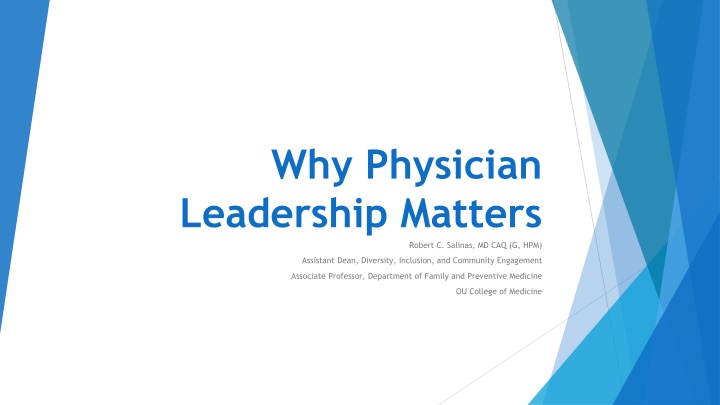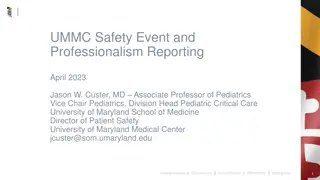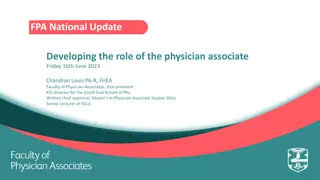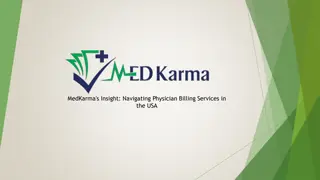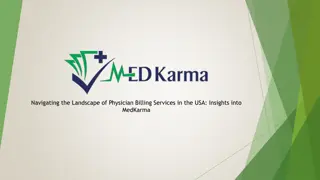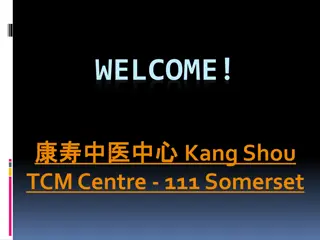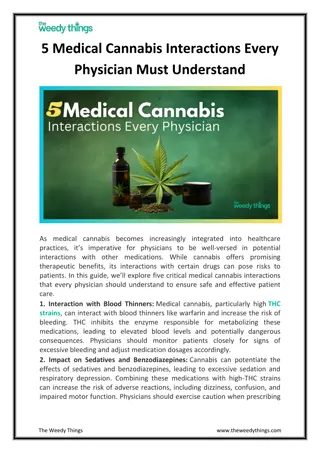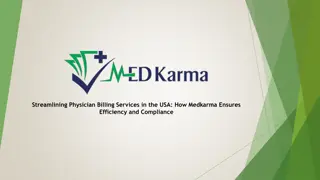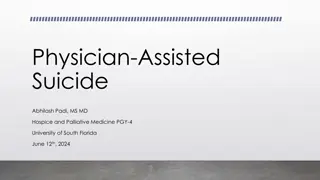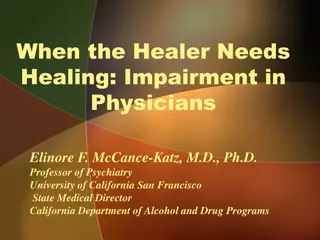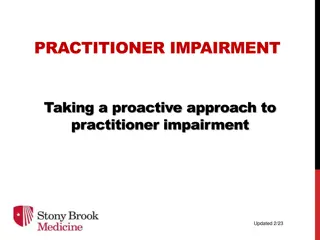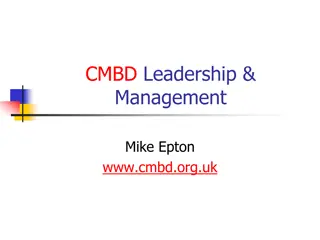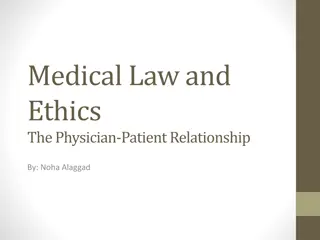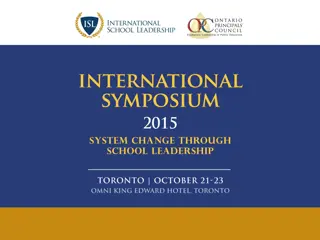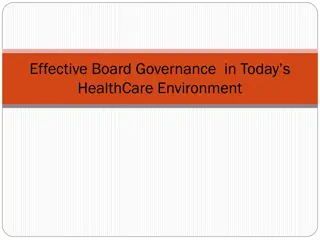Importance of Physician Leadership in Evolving Healthcare
The US healthcare system is in need of repair, with physician engagement declining, exacerbated by the Covid-19 pandemic. Changes in healthcare focus on quality, costs, and six domains of healthcare quality. Leadership development in medical education emphasizes personal qualities, teamwork, communication, advocacy, and self-awareness. Extrinsic and intrinsic motivations drive physician leadership.
Download Presentation

Please find below an Image/Link to download the presentation.
The content on the website is provided AS IS for your information and personal use only. It may not be sold, licensed, or shared on other websites without obtaining consent from the author.If you encounter any issues during the download, it is possible that the publisher has removed the file from their server.
You are allowed to download the files provided on this website for personal or commercial use, subject to the condition that they are used lawfully. All files are the property of their respective owners.
The content on the website is provided AS IS for your information and personal use only. It may not be sold, licensed, or shared on other websites without obtaining consent from the author.
E N D
Presentation Transcript
Why Physician Leadership Matters Robert C. Salinas, MD CAQ (G, HPM) Assistant Dean, Diversity, Inclusion, and Community Engagement Associate Professor, Department of Family and Preventive Medicine OU College of Medicine
The current state of affairs The US healthcare system is in need of repair The practice of medicine is evolving Physician engagement continues to decline Covid-19 pandemic has made it worse
Changes in our healthcare system Value = Quality (outcome, safety, service) Cost (resources consumed) 25% of company employees are enthusiastic 50% of company employees do just enough 25% of company employees are totally turned off by their job
Six Domains of HealthCare Quality Safe Effective Patient-Centered Timely Efficient Equitable Agency for Healthcare Research and Quality
Leadership What does it mean to you?
On leadership What are my strengths? How do I work best? What are my values? Where do I belong? How can I make a difference?
Leadership Development in U.S. Undergraduate Medical Education Medical Leadership Competency Framework Most Common Themes in US Medical Schools Demonstrating Personal Qualities Teams and Teamwork Working With Others Personal Leadership Managing Services Style and Values Improving Services Conflict Management and Resolution Setting Direction Communication Skills Advocacy Self Awareness Bridget Matsas
Extrinsic and Intrinsic Motivations Extrinsic Intrinsic Monetary compensation Personal growth Having power Satisfaction of doing a good job Having a title Helping others develop Public recognition Finding meaning from efforts Social status Being true to one s believe Winning over others Making a difference in the world
Alignment of Leadership Models to the Healthcare Industry Transactional leadership: systems and reinforcements Adaptive leadership: enable a group to overcome challenges created by change Transformational leadership: inspire their followers to look past their own self-interest Servant leadership: focuses on serving the highest needs of others in an effort to help others achieve their goal Awareness, self-knowledge, self-reflection Purpose, meaning, beliefs Listening, empathy, healing, persuasion, stewardship, commitment to the growth of people, and building community Victor T. Trastek
Leading in Difficult Times Leadership theory Counter measures Volatility Vision Uncertainty Understanding Complexity Clarity Ambiguity Agility Followership and Teamwork
New Paradigm for Leading COMMAND AND CONTROL Compliance TRUST AND INSPIRE Commitment Transformational Effectiveness Change and innovation Growth mindset Collaboration among flexible, interconnected teams Release, Unleash Inspiration Manage things, Lead people Transactional Efficiency Status Quo and Incrementalism Fixed Mindset Coordination among Functional Silos Control, contain Motivation Manage people and things David Covey
Wellness-Centered Leadership (WCL) Inspire Change Cultivate relationships Individuals Teams Care about the people always Shanafelt
Leadership versus Management Leadership Management Purpose Dealing with change Dealing with complexity Focus Thinking, change and innovation, doing the right things Formulating visions, aligning people, motivating, inspiring, influencing Doing, execution and implementation, doing things right Planning projects, organizing people, monitoring progress and performance, problem- solving Main Processes/Skills Orientation Future, long-term Present, short-term Daily Work High level, strategic Ground-level, tactical Seeks to Achieve Change, newness, effectiveness, movement Order, consistency, efficiency, stability
Leadership versus Management Leadership is the ability of an individual or a group of individuals to influence and guide followers or other members of an organization. There Here
Debunking Three Myths about Leadership Myth 1: Leaders are superheroes Myth 2: People are born leaders Myth 3: You cannot change Hubert Joly
What got you here wont get you there Winning too much Adding too much value Passing judgment Making destructive comments Starting with No, But, or However Telling the world how smart we are Speaking when angry Negativity, or let me explain why that won t work. Withholding information Failing to give proper recognition Claiming credit that we don t deserve Making excuses Clinging to the past Playing favorites Refusing to express regret Not listening Failing to express gratitude Punishing the messenger Passing the buck An excessive need to be me Marshall Goldsmith
Why Change is Difficult Change represents uncertainty- uncertainty is threatening and painful for a brain that wants to keep us safe and alive. We are afraid of the unknown Change takes time and effort Self-control and routine are tiring Afraid of failure/vulnerable Our response to change: Change (uncertainty) Threat response (fight or flight) Increased anxiety and fear Reduced ability to focus and think clearly Impaired performance and increased emotion Changing too many things at once The status quo is comfortable Unclear about the benefits of change The change is broad and vague Lack of purpose Lack of motivation
Treating Learning as a Lifelong Journey Cultivate a growth mindset: the belief that talents and abilities are not fixed but instead can be developed. Perpetual growth potential? Think of your previous setbacks, how did you respond to them? What have you learned from them?
Growth Mindset: Emotional Intelligence Self-Awareness The ability to recognize and understand your moods, emotional, and drives and their effect on others Self-Regulation The ability to control or redirect disruptive impulses and moods, propensity to suspend judgement, think before acting Motivation A passion to work for reasons that go beyond money or status, a propensity to pursue goals with energy and persistence Empathy The ability to understand the emotional makeup of the other people skill in treating people according to their emotional reactions Social Skill Proficiency in managing relationships and building networks, an ability to find common ground and build rapport Daniel Goleman
Meaning and purpose Viktor Frankl
Leadershift It is an ability and willingness to make leadership change that will positively enhance organizational and personal growth. You cannot be the same, think the same, and act the same if you hope to be successful in a world that does not remain the same. John Maxwell
Equipping Others I do it. I do it, and you are with me. You do it, and I am with you. You do it. You do it, and someone is with you. John Maxwell
Resources Book, Inspired Physician Leadership, by Charles R. Stoner and Jason S. Stoner Handout, articles and book references American Association for Physician Leadership www.physicianleaders.org
